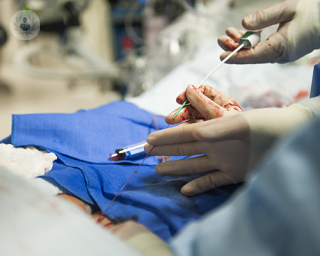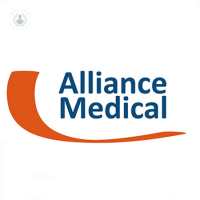Chemoembolization
Professor Mark Little - Interventional radiology
Created on: 04-23-2015
Updated on: 11-10-2023
Edited by: Conor Lynch
What is chemoembolization?
Chemoembolization, also known as trans-arterial chemoembolization (TACE), is a treatment that aims to shrink a cancerous liver tumour, so it is small enough to be removed surgically. Chemoembolization focuses a large dose of chemotherapy directly on a tumour which reduces the blood supply to the tumour, causing it to shrink.

Why is chemoembolization done?
Chemoembolization will be carried out if surgery is not feasible, or in preparation for surgery to ensure the tumour has been shrunk to a size that can be removed safely via surgery.
What does chemoembolization involve?
Chemoembolization is performed by an interventional radiologist, who inserts a catheter into the femoral artery in the groin. A mild sedative or local anaesthetic will be given to avoid any pain and discomfort. The catheter is then guided along the femoral artery into the hepatic artery which feeds the liver. Once the catheter is in the correct place within the liver, chemotherapy is injected into the catheter.
Following the chemotherapy, a special gel or tiny beads will be injected into the catheter. This is to stop the blood flow to the tumour which helps to kill cancer cells by cutting off the oxygen supply. This also helps to keep the chemotherapy drugs in the liver for longer. Hence, chemoembolization has a two-pronged approach; firstly the chemotherapy, and secondly, the cutting off of blood and oxygen flow.
How do you prepare for chemoembolization?
Firstly, your suitability for chemoembolization will be determined, using several scans (MRI and CT) and liver function tests. If you have any portal vein blockages (this is the vein that supplies blood from the gut to the liver), cirrhosis or blocked bile ducts, chemoembolization may not be possible.
It’s important to be aware of the potential side-effects from chemoembolization:
- Nausea, pain and a slight fever – known as post-embolization syndrome is common, but can be managed with painkillers and anti-nausea drugs.
- Side-effects from the chemotherapy.
- In rare cases, if the liver is damaged, liver failure may result.
What does recovery from chemoembolization involve?
Once treatment is complete, the catheter is removed. You will remain resting in bed for a few hours following the procedure to ensure the catheter wound does not bleed.
What are the main alternatives to chemoembolization?
If you are having too many side-effects from the chemotherapy, trans-arterial embolization (TAE) may be offered instead.





